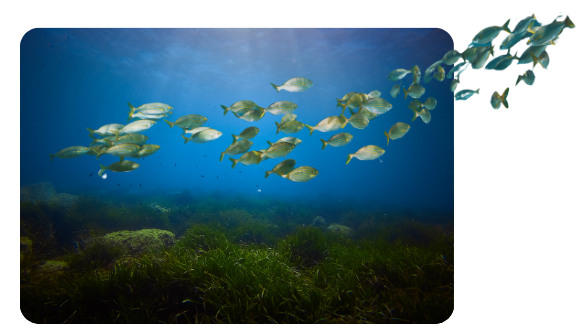Story
Global food security and species survival at risk from accelerating ice loss, says major new report
06 November 2025
The ‘2025 State of the Cryosphere Report’ has been published with expert input from PML, among others

Icebergs of Iceland’s Vatnajokull. Anders Jilden | Unsplash
As policymakers gather in Belém, Brazil for the UNFCCC Conference of the Parties (COP30), a new report coordinated by the International Cryosphere Climate Initiative (ICCI) and involving the work of over 50 leading cryosphere scientists, including PML’s Professor Helen Findlay, provides a stark warning about the impacts of accelerated global ice loss.
“A child born today and living within 2–3 meters of sea-level rise will almost certainly lose their home within their lifetime if current emissions continue.”
Pam Pearson, ICCI’s Director
The ICCI concludes that “current unambitious climate commitments, leading the world to well over 2°C of warming (above pre-industrial levels), spell disaster for billions of people from global ice loss”. It also highlights “a growing scientific consensus that freshwater pouring off the melting Greenland and Antarctic ice sheets, together with warmer waters, seem to be slowing important ocean currents at both poles, which would wreak havoc on ocean ecosystems and bring much colder temperatures to northern Europe”.
The cryosphere is the name given to Earth’s snow and ice regions and ranges from ice sheets, glaciers, snow and permafrost to sea ice and the polar oceans – which are acidifying far more rapidly than warmer waters. The State of the Cryosphere report describes how a combination of melting polar ice sheets, vanishing glaciers, and thawing permafrost will have “rapid, irreversible, and disastrous impacts worldwide”.
At the same time, the Report asserts that the worst impacts can still be avoided, based on new findings also released today by Climate Analytics and the Potsdam Institute. These “Highest Possible Ambition” (HPA) pathways show that despite overshoot as high as 1.8°C, temperatures can be lowered this century through a combination of aggressive emissions cuts and land-based carbon dioxide removal techniques.
Professor Findlay, who earlier this year led a study showing how the planetary boundary for ocean acidification has been breached (Ocean acidification more advanced than previously thought – Plymouth Marine Laboratory), was an external reviewer for the report, as well as a key provider of the latest scientific knowledge relating to the impact of climate change on the frozen ocean and ocean acidification.
She said: “Our polar oceans are undergoing massive disruptions that will change these environments at a very basic level, from corrosive waters to the slowdown of ocean currents that will last hundreds or thousands of years. These changes have huge consequences for the rest of the planet and of course, us humans who rely on these important systems. Halting carbon emissions is the only way to stop this.”
Key findings of the Report:
- Slowing sea-level rise to a manageable level requires a long-term temperature goal at, or even below 1°C.
- Staying even at current warming levels of 1.2°C will likely lead to several meters of sea-level rise over coming centuries, exceeding coastal adaption limits.
- The European Alps, Scandinavia, Rockies of North America and Iceland would lose at least half their ice at or below sustained 1°C, and all or nearly all ice at 2°C.
- There is growing scientific consensus that freshwater from the melting Greenland and Antarctic ice sheets, together with warmer waters, seem to be slowing important ocean currents at both poles.
- Sea ice at both poles has declined year-round, and combined Arctic and Antarctic sea ice this year hit its lowest area ever in February 2025.
- Ocean acidification has passed critical thresholds in much of the Arctic and Southern Oceans, with some regions reaching non-survivable levels for shelled life.
- Permafrost is now confirmed as a net source of carbon emissions, releasing more carbon into the atmosphere than these ecosystems absorb in the growing season.
“The best and worst part of these findings is that none of this damage is necessary,” said Pam Pearson, ICCI’s Director.
“Policy makers at COP30 must stop denying this physical reality and finally deliver the deep, rapid and sustained emissions reductions need to protect global security from accelerating ice losses.”
To read the report visit: State of the Cryosphere Report 2025 – ICCI – International Cryosphere Climate Initiative
Professor Findlay will also be taking part in COP30. Please visit PML at the UN Climate Change Meeting COP30 – Plymouth Marine Laboratory
Related information
